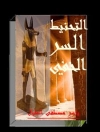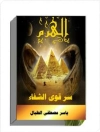’How do we approach the study of masculinity in the past?’ Ruth Mazo Karras asks. Medieval documents that have come down to us tell a great deal about the things that men did, but not enough about what they did specifically as men, or what these practices meant to them in terms of masculinity. Yet no less than in our own time, masculinity was a complicated construct in the Middle Ages.
In Thou Art the Man, Karras focuses on one figure, King David, who was important in both Christian and Jewish medieval cultures, to show how he epitomized many and sometimes contradictory aspects of masculine identity. For late medieval Christians, he was one of the Nine Worthies, held up as a model of valor and virtue; for medieval Jews, he was the paradigmatic king, not just a remnant of the past, but part of a living heritage. In both traditions he was warrior, lover, and friend, founder of a dynasty and a sacred poet. But how could an exemplar of virtue also be a murderer and adulterer? How could a physical weakling be a great warrior? How could someone whose claim to the throne was not dynastic be a key symbol of the importance of dynasty? And how could someone who dances with slaves be noble?
Exploring the different configurations of David in biblical and Talmudic commentaries, in Latin, Hebrew, and vernacular literatures across Europe, in liturgy, and in the visual arts, Thou Art the Man offers a rich case study of how ideas and ideals of masculinity could bend to support a variety of purposes within and across medieval cultures.
Innehållsförteckning
Contents
Acknowledgments
List of Abbreviations
Introduction
Chapter 1. David His Tens of Thousands: Prowess and Piety
Chapter 2. Surpassing the Love of Women: Love, Friendship, Loyalty Between Men
Chapter 3. I Have Sinned Against the Lord: Sex and Penitence
Chapter 4. With Sacred Music upon the Harp: Creativity and Ecstasy
Chapter 5. O My Son Absalom: Establishing a Dynasty
Conclusion
Notes
Bibliography
Index
Om författaren
Ruth Mazo Karras is Lecky Professor of History at Trinity College Dublin. She is author of, among other books, From Boys to Men: Formations of Masculinity in Late Medieval Europe and Unmarriages: Women, Men, and Sexual Unions in the Middle Ages, both available from the University of Pennsylvania Press.












